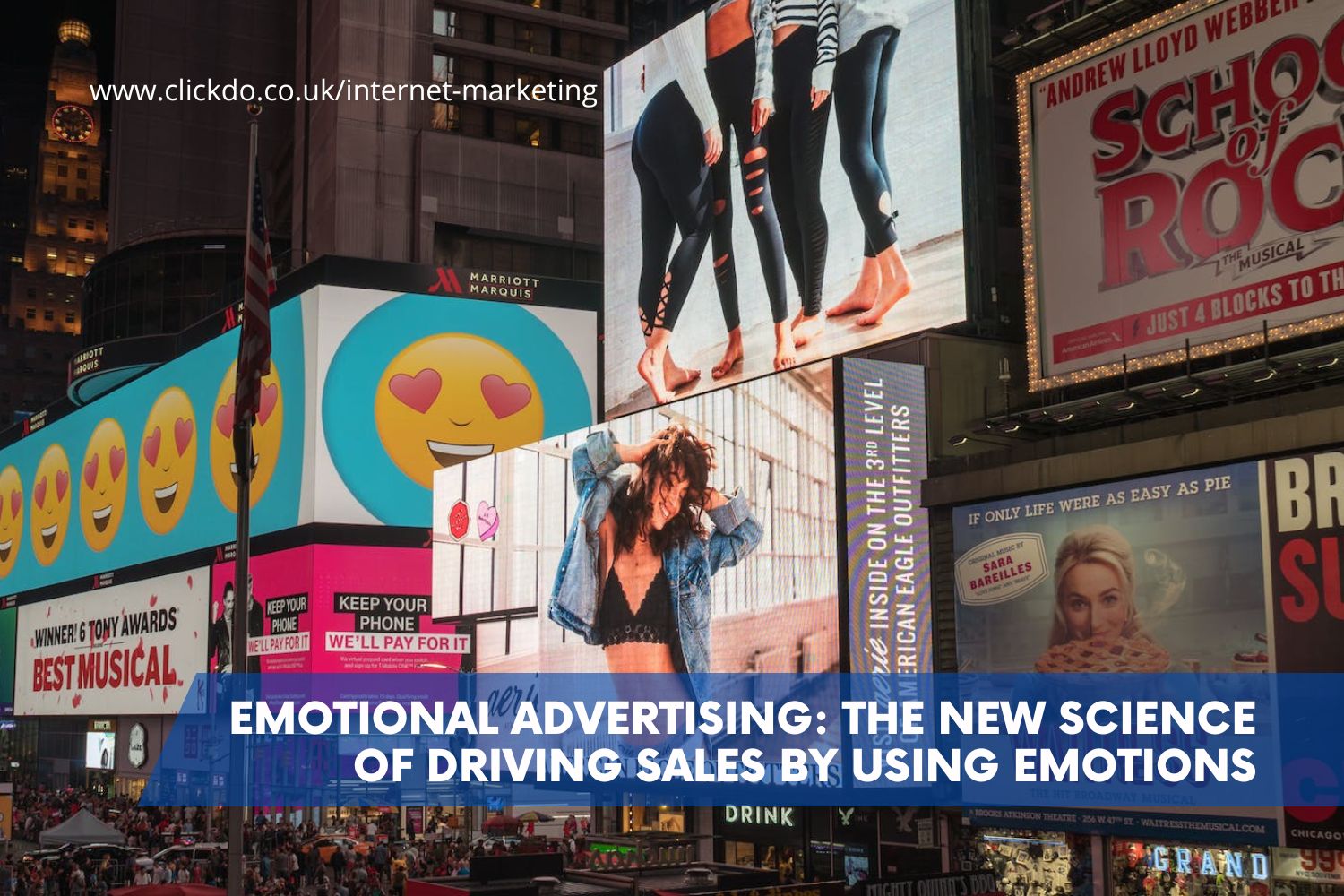
Emotional Advertising: The New Science of Driving Sales by Using Emotions
Marketers are consistently searching for innovative ways to reach consumers. One powerful tool found to be effective in driving sales is emotional advertising in digital advertising.
Advertisers make meaningful connections with their target demographics by tapping into customers’ feelings.
Read on to learn more about emotional advertising and how to introduce the concept into your future marketing campaigns.
Understanding Emotional Advertising
Emotional advertising refers to a strategy that focuses on eliciting certain emotions from a target audience. The marketer intends to create a memorable impact by triggering a passionate response. The advertiser wants the audience to feel a specific emotion: joy, sadness, nostalgia, or empathy.
Emotions drive decisions. If prospective customers feel joyful, they tend to be open to taking more buying risks. Also, if seeing an ad makes a customer happy, they’re more prone to develop positive feelings towards the brand.
Effectiveness of Appealing to Customer Emotions
 Emotional advertising has proven effective. According to the Harvard Business Review, when a bank recently introduced a credit card targeting millennials, the company developed a nostalgic ad campaign. The results were impressive—a 70 per cent usage increase within the millennial age range.
Emotional advertising has proven effective. According to the Harvard Business Review, when a bank recently introduced a credit card targeting millennials, the company developed a nostalgic ad campaign. The results were impressive—a 70 per cent usage increase within the millennial age range.
Humour is the most effective way to connect with customers, according to a 2021 Journal of Business and Management study. When marketers make audiences laugh, the customers will have good associations with the brand. Studies have also found that emotional appeal ads perform twice as well as rational appeal types.
How Emotional Advertising Works
Emotional advertising campaigns perform well due to the following reasons:
- Memorability. Campaigns that target emotions are more likely to be remembered.
- Personal connection. Emotional advertising aims to create a long-lasting connection between the individual and the brand.
- Enhanced brand identity. Products can’t get lost in a crowded market. An emotion-based ad helps a product stand out.
- Stronger trust. A well-done campaign will showcase the brand’s values and goals, making the audience feel like the company is trustworthy.
Incorporating Emotions into Your Ads
 A strategic approach, including partnerships with ugc content creators, works best to drive sales through emotional advertising campaigns. Before planning any ads, you must first identify your target audience. Who are they? What are their motivators? For instance, if the target audience wants to stand out from the crowd, they’ll respond best to ads that make them feel special.
A strategic approach, including partnerships with ugc content creators, works best to drive sales through emotional advertising campaigns. Before planning any ads, you must first identify your target audience. Who are they? What are their motivators? For instance, if the target audience wants to stand out from the crowd, they’ll respond best to ads that make them feel special.
Storytelling is the most crucial tool a marketer can use when developing ads based on emotions. Craft stories that naturally relate to your audience. Choose relatable characters in realistic situations.
Enhance the story with evocative imagery and sounds. Images, colours, and sounds can evoke emotional responses. For instance, colour psychology has linked red to emotions such as excitement, passion, anxiety, danger, and power. Blue can make a person feel tranquil, calm, and trusting.
Tips for Creating Emotional Ads
The following are the best practices for emotional advertising campaigns:
- Showcase brand values as part of your ad campaign. In recent years, customers have placed more importance on brand values. Connect with audiences by demonstrating the brand’s commitment to important causes like sustainability and world peace.
- Focus on authentic messaging. Customers can flesh out insincerity very quickly. Don’t force emotions in ads. Allow for it to come naturally. Never aim to manipulate consumers with your ads since it will later undermine brand values and trust.
- Incorporate user-generated content (UGC). UGC is frequently utilised in marketing because it adds authenticity to ads. UGC can include customer testimonials to show how a product or service made a real-life impact.
- Test ad responsiveness and make adjustments as needed. Analytics tools and metrics give you the necessary resources to see how well your ads connect with customers. Test out different ad versions and make performance comparisons. Surveys and focus groups also provide invaluable feedback on how a target audience feels after viewing an ad.
Downsides of Emotional Advertising
 Emotional advertising has a few drawbacks, including the capacity to push customers away instead of drawing them in. If ads bring out negative emotions, like fear or guilt, the campaigns may turn off prospective buyers.
Emotional advertising has a few drawbacks, including the capacity to push customers away instead of drawing them in. If ads bring out negative emotions, like fear or guilt, the campaigns may turn off prospective buyers.
Another thing marketers should keep in mind is the monitoring of cyber threats.
Advertisers must use tools like a virtual private network (VPN) to prevent data breaches when collecting and using customer data to manage their ad campaigns. VPNs keep connections secure by encrypting any data sent between the device and the network. A VPN free trial is best to test the tool’s features and decide if it suits your marketing team.
A Few Final Words
Emotional advertising can have the power to influence the way customers feel about brands. By tapping into customer emotions, marketers can affect buying decisions. Creating meaningful connections with a target audience can drive sales over prolonged periods and build brand loyalty.
However, it’s essential to focus on authentic messaging to avoid pushing customers away. Don’t forget to use a strategic approach and follow common cybersecurity practices to safeguard your advertising data.
Author Profile
- As the Chief of Marketing at the digital marketing agency ClickDo Ltd I blog regularly about technology, education, lifestyle, business and many more topics.
Latest entries
 Digital MarketingOctober 24, 2025The State of AI and Digital Marketing in 2025: A Brief Analysis
Digital MarketingOctober 24, 2025The State of AI and Digital Marketing in 2025: A Brief Analysis Digital MarketingOctober 1, 2025How Dating Sites Climb to the Top of Google: SEO, Link Building, and the Cost of Visibility
Digital MarketingOctober 1, 2025How Dating Sites Climb to the Top of Google: SEO, Link Building, and the Cost of Visibility Digital MarketingSeptember 24, 2025Global vs Local SEO Strategies for UK Companies
Digital MarketingSeptember 24, 2025Global vs Local SEO Strategies for UK Companies Digital MarketingSeptember 23, 2025High-Competition Niches: SEO Tactics That Cut Through the Noise
Digital MarketingSeptember 23, 2025High-Competition Niches: SEO Tactics That Cut Through the Noise

